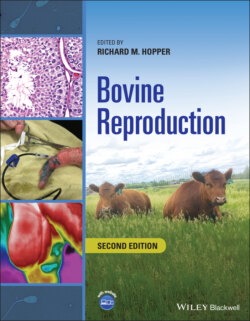Читать книгу Bovine Reproduction - Группа авторов - Страница 247
Introduction
ОглавлениеThe following discussion of lameness issues in cattle is not intended to be a recipe for how to resolve a particular problem associated with lameness. It is a compilation of knowledge gained from 40 years of serving the beef cattle industry. Lameness evaluation is an analytical process, to be taken one step at a time, giving consideration to history, age, breed, sex, environment, intended use, and nutritional state. Conducting a proper examination on the bovine animal is no different from what is done in the equine species, though the examination of cattle takes more time and requires better restraint. Bovine lameness examination requires a pen or alley with a hard surface and a tilt table or tilt squeeze chute. Proper restraint reduces the chance of injury for both the patient and the examiner. In practices that do not have proper facilities or methods of restraint, often the diagnosis of lameness comes down to a good guess (Figure 16.1).
Figure 16.1 Looks can be deceiving – a calf with spastic paresis.
Most of the literature available is derived from treatment of dairy cow lameness; very little has been reported dealing with beef cattle. By the end of the chapter, the reader should have a better appreciation of lameness conditions in beef cattle and their expected response to treatment.
Bovine lameness examinations must begin with a good history that considers duration of lameness, observation of irregularities, and the production parameters involved. During visual examination, the whole body and every limb must be evaluated before focusing on the affected limb. For instance, while examining an animal for a suspected subsolar abscess in a back hoof, do not miss the laceration on the pastern of the supporting limb and subsequent swelling indicating a septic flexor tendon sheath. Watching the animal in motion may help in ruling out proximal versus distal limb problems. Observing the entire animal is important as sometimes other limbs may be affected by the primary lameness or may contribute further to it (Figure 16.2).
Figure 16.2 Cellulitis involving the right forelimb and interdigital fibroma on the left forelimb.
